- Use Built-in Analytics Tools: Track metrics like page views, time on page, and user behavior directly in your CMS.
- Integrate External Tools: Add platforms like Google Analytics for deeper insights.
- Focus on Key Metrics: Monitor engagement (time on page, bounce rate), conversions (form submissions, downloads), and SEO (organic traffic, rankings).
- Set Clear Goals: Define measurable targets like increasing average time on page or boosting conversions.
- Organize Content: Tag content by topic, format, and funnel stage to track trends effectively.
- Fix Low Performers: Improve underperforming content by optimizing structure, CTAs, and visuals.
- Test and Refine: Use A/B testing for headlines, images, and CTAs to see what resonates.
Quick Tip:
Start with tools your CMS already provides, then expand with external analytics if needed. Keep goals simple and track progress regularly to refine your strategy.
Measuring Content Marketing Performance with Google Analytics

CMS Analytics Tools Overview
Most modern CMS platforms come with tools to track how your content performs. By pairing these built-in features with external tools, you can get a clearer picture of your content’s overall impact.
Standard CMS Analytics Features
Popular CMS platforms include built-in analytics tools. For example, WordPress offers JetPack Analytics for tracking visitors, while HubSpot‘s CMS Hub provides detailed performance insights.
| Feature | Function | Metrics |
|---|---|---|
| Page Analytics | Tracks page performance | Pageviews, time on page, scroll depth |
| User Behavior | Monitors user actions | Click patterns, navigation paths, devices used |
| Content Engagement | Measures interaction | Comments, shares, backlinks |
| Performance Tracking | Tracks technical metrics | Load times, mobile responsiveness |
Adding External Analytics Tools
To go beyond basic insights, consider integrating external tools like Google Analytics. Here are a few ways to do this:
- Direct API Integration: Connect your CMS directly to analytics platforms for seamless data sharing.
- Plugin Installation: Use pre-built plugins to link your CMS with popular tools.
- Custom Code Implementation: Add tracking scripts manually to capture more specific metrics.
Each method offers different levels of customization and depth, so choose the one that best fits your needs.
Main Performance Metrics
When analyzing your content, focus on metrics that align with your goals. Key categories include:
| Metric Category | Key Measurements |
|---|---|
| Engagement | Average time on page, bounce rate |
| Conversion | Form submissions, downloads |
| SEO Performance | SERP rankings, organic traffic |
| Social Impact | Shares, comments, likes |
Growth-onomics highlights the importance of using data to guide decisions. Instead of relying on vanity metrics, focus on numbers that directly influence your business goals. Once you’ve identified these metrics, set clear performance targets and structure your content strategy to meet them.
Setting Up Content Analytics
Setting Performance Goals
Set specific, measurable, and time-bound goals that align with your business objectives. Focus on metrics that directly influence your revenue rather than superficial numbers. Here’s a simple way to structure your goals:
| Goal Type | Example Metric | Target Range |
|---|---|---|
| Engagement | Average Time on Page | 3-5 minutes |
| Conversion | Lead Form Submissions | 2-3% conversion rate |
| Revenue | Content-Attributed Sales | $5,000-$7,500/month |
| SEO | Organic Traffic Growth | 15-20% quarterly increase |
For instance, if your blog currently averages 1.5 minutes of reading time, aim for a 30% improvement over the next three months rather than jumping straight to a 5-minute target.
Content Organization Methods
A consistent content organization system makes tracking easier and more accurate. Use a structured tagging system to identify patterns and trends in your content’s performance:
| Category Level | Purpose | Example |
|---|---|---|
| Primary Topic | Main subject area | Product Updates, How-to Guides |
| Content Format | Type of content | Blog Post, Case Study, Tutorial |
| Funnel Stage | Customer journey position | Awareness, Consideration, Decision |
| Business Unit | Department ownership | Marketing, Sales, Support |
Once your tagging system is in place, configure your CMS analytics to capture data accurately.
Analytics Setup Steps
After organizing your content, set up analytics to track your performance effectively. Here’s how:
1. Enable Basic Tracking
Ensure tracking codes are active on all pages. Platforms like WordPress or HubSpot often handle basic tracking automatically once set up.
2. Configure Custom Goals
Identify and define conversion goals, such as:
- Newsletter signups
- Resource downloads
- Visits to product pages
- Contact form submissions
3. Implement Advanced Tracking
Take tracking a step further with these advanced methods:
- Add custom event tracking for interactive elements like buttons or videos.
- Monitor scroll depth to see how far users engage with your content.
- Use heat maps to visualize user behavior on your pages.
- Set up funnel visualizations to track how users navigate through your site.
These steps ensure you gather actionable insights to refine your content strategy.
sbb-itb-2ec70df
Reading Performance Data
Measuring Reader Engagement
Understanding how readers interact with your content is key. Keep an eye on these metrics – though benchmarks can differ by industry:
| Metric | What It Measures |
|---|---|
| Average Time on Page | How long readers actively stay on your content |
| Scroll Depth | How much of your page readers scroll through, showing content consumption levels |
| Social Shares | How often your content is shared on social platforms |
| Click-Through Rate | Interaction with links or calls-to-action within your content |
Monitoring these metrics helps you spot trends and make improvements. For instance, if average time on page drops, it might be time to tweak your layout or add interactive features. Combine this data with conversion metrics to get a full picture of how your content is performing.
Tracking Content Goals
To connect your content to business outcomes, focus on conversion metrics. Track key actions like form submissions, downloads, product page visits, and newsletter signups.
| Goal Type | Tracking Method |
|---|---|
| Lead Generation | Form Submissions |
| Resource Downloads | Access to PDFs or other assets |
| Product Interest | Visits to product pages |
| Email Signups | Newsletter form completions |
Most CMS dashboards allow you to track these actions. You can also set up event tracking for smaller interactions, like video plays or tool usage, to gain deeper insights into how readers engage with your content.
Finding Data Patterns
Once you’ve gathered engagement and conversion data, dig into the numbers to spot patterns you can replicate. Here are some areas to analyze:
| Pattern Type | What to Analyze | Action Items |
|---|---|---|
| Content Length | Compare word count to engagement levels | Adjust your content length to match what resonates most with your audience |
| Publishing Time | Look at when posts perform best | Schedule posts during peak engagement times |
| Topic Categories | Review performance across different subjects | Focus on topics that consistently draw interest |
| Content Format | Evaluate structural elements like lists, visuals, or videos | Use formats that consistently drive higher engagement |
Improving Content with Data
Fixing Low-Performing Content
Start by spotting underperforming content in your CMS using key metrics like bounce rates, average time on page, conversion rates, and social engagement.
Here’s how you can improve it:
- Low engagement: Break up text into shorter paragraphs and add clear subheadings for easier reading.
- Weak conversions: Revamp your calls-to-action (CTAs) and make your offer stand out.
- High bounce rates: Add internal links and recommend related content to keep visitors exploring.
- Low social engagement: Include shareable stats, eye-catching visuals, and infographics.
Testing Content Changes
Systematic testing helps you figure out what works best. Focus on these areas:
- Headlines: A/B test different headline options to see which grabs the most attention.
- Featured Images: Test various image styles to find the one that resonates with your audience.
- CTA Placement: Use heatmaps to pinpoint where CTAs perform best and refine their design.
- Content Structure: Analyze session recordings to understand how visitors interact with your pages.
Example: Spotify slashed its email bounce rate from 12.3% to 2.1% in just 60 days by using Mailchimp‘s Email Verification API. This change boosted deliverability by 34% and added $2.3M in revenue.
Use insights from these tests to improve your overall content strategy.
Planning Future Content
Let performance data shape your content strategy. Study your top-performing pieces to identify the formats, lengths, and topics your audience loves. Pay attention to audience behavior, like peak engagement times and device usage, and explore competitor content to spot untapped opportunities.
Build a content plan that prioritizes topics your audience cares about and aligns with your business goals. Regularly update your strategy using the latest performance data. If you need extra guidance, consult experts in analytics, UX, customer journey mapping, or conversion optimization to stay on track.
Wrapping It Up
Let’s sum up the key points from the setup and performance tracking process.
Using CMS analytics effectively can fuel content growth and improve ROI by enabling clear, well-informed decisions. Keep a close eye on performance metrics – like bounce rates, conversion goals, and test outcomes – to gather insights that can be applied for immediate improvements.
Content analysis is an ongoing process that follows a cycle:
- Monitor trends
- Adjust based on user data
- Plan strategically
- Test and refine repeatedly
Collaborating with data analytics professionals, such as Growth-onomics, can help fine-tune your strategy and deliver measurable outcomes. The best content strategies rely on a mix of data-driven insights, consistent testing, and thoughtful adjustments.
"With Data as Our Compass We Solve Growth." – Growth-onomics
Aim to create a content strategy that uses analytics wisely while managing resources efficiently. This ensures lasting success and keeps your audience engaged. By applying these methods consistently, your CMS can evolve into a strong asset for achieving ongoing content goals.









